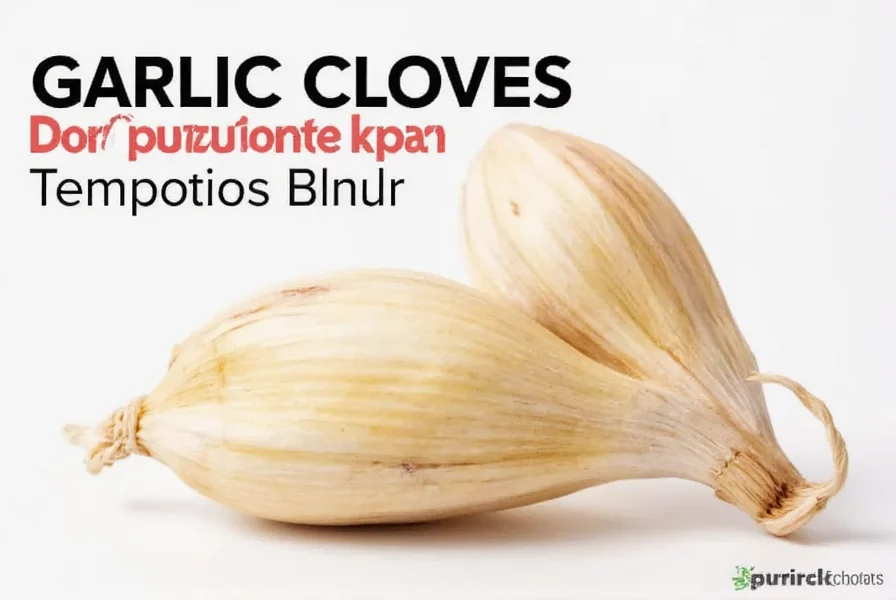When tooth pain strikes unexpectedly, many people turn to home remedies for immediate relief. Garlic has been used across cultures for dental discomfort, but understanding its actual effectiveness and limitations is crucial for safe application.
How Garlic Works for Tooth Pain
Garlic contains allicin, a compound formed when garlic is crushed or chopped. Allicin demonstrates:
- Antimicrobial properties that may combat oral bacteria
- Anti-inflammatory effects that could reduce swelling
- Mild analgesic (pain-relieving) capabilities
Research published in the Journal of Indian Society of Pedodontics and Preventive Dentistry indicates garlic extract shows effectiveness against common oral pathogens. However, these studies typically examine concentrated extracts rather than raw garlic application.
Proper Application Method for Toothache Relief
For those considering garlic as a temporary remedy, follow these evidence-based steps:
- Clean a fresh garlic clove thoroughly
- Peel and crush the clove to activate allicin
- Apply directly to the affected tooth and surrounding gum
- Leave in place for 15-20 minutes (no longer to prevent tissue irritation)
- Rinse thoroughly with warm salt water
| Remedy | Time to Relief | Duration of Effect | Scientific Support Level |
|---|---|---|---|
| Garlic application | 15-30 minutes | 1-2 hours | Moderate (traditional use) |
| Clove oil | 5-10 minutes | 2-3 hours | Strong |
| Over-the-counter pain relievers | 20-30 minutes | 4-6 hours | Very strong |
Limitations and Safety Considerations
While garlic may offer temporary relief, important limitations exist:
- Raw garlic can cause chemical burns on sensitive oral tissues with prolonged contact
- It doesn't address the underlying cause of tooth pain (cavity, infection, etc.)
- Effectiveness varies significantly between individuals
- Not recommended for children under 12 due to tissue sensitivity
- May interact with blood-thinning medications
Dental professionals emphasize that home remedies like garlic provide only symptomatic relief. The American Dental Association states that persistent tooth pain lasting more than 1-2 days requires professional evaluation to prevent complications.
When to Seek Professional Dental Care
Garlic application should never replace professional dental treatment. Seek immediate dental care if you experience:
- Pain lasting longer than 48 hours
- Swelling in your face or jaw
- Fever accompanying tooth pain
- Difficulty opening your mouth or swallowing
- Pus or discharge around the affected tooth
These symptoms may indicate a serious infection requiring antibiotics or other professional intervention. Untreated dental infections can lead to severe complications including abscess formation and systemic infection.
Scientific Evidence Overview
While traditional use of garlic for dental pain spans centuries, modern scientific research provides mixed but promising results:
- A 2016 study in Avicenna Journal of Phytomedicine found garlic extract effective against Enterococcus faecalis, a common bacterium in root canal infections
- Research in BMC Complementary Medicine and Therapies demonstrated allicin's anti-inflammatory properties may reduce pain perception
- However, clinical trials specifically testing raw garlic application for toothache remain limited
Dental researchers note that while garlic shows potential as an adjunct therapy, it lacks the targeted effectiveness of modern dental treatments for addressing the root causes of tooth pain.
Alternative Home Remedies Worth Considering
If garlic doesn't provide sufficient relief or causes irritation, these evidence-supported alternatives may help:
- Cold compress: Applied externally to reduce inflammation
- Salt water rinse: 1/2 teaspoon salt in warm water to reduce bacteria
- Clove oil: Contains eugenol, a natural anesthetic with stronger evidence base
- Hydrogen peroxide rinse: Diluted 3% solution can reduce bacteria (use cautiously)
Remember that all home remedies provide only temporary relief. They should complement—not replace—professional dental evaluation and treatment.
Final Considerations
Garlic's potential for temporary toothache relief makes it a reasonable short-term option when professional care isn't immediately available. However, its effectiveness is limited compared to modern dental treatments, and it carries potential risks with improper use.
The most important step for anyone experiencing tooth pain is scheduling a dental appointment to address the underlying cause. Home remedies like garlic can provide comfort during the waiting period but should never delay necessary professional care.

Frequently Asked Questions
How long does garlic take to work for toothache?
Garlic typically provides noticeable relief within 15-30 minutes of application, with effects lasting 1-2 hours. Maximum effectiveness occurs when fresh, crushed garlic is applied directly to the affected area for no longer than 20 minutes to prevent tissue irritation.
Can garlic cure a tooth infection?
No, garlic cannot cure a tooth infection. While garlic's antimicrobial properties may temporarily reduce bacterial activity, it doesn't eliminate the infection source or replace necessary dental treatments like root canals or antibiotics prescribed by a dentist.
Is raw garlic safe to put on gums for tooth pain?
Raw garlic can be used on gums for short periods (15-20 minutes), but prolonged contact may cause chemical burns or tissue irritation due to its acidic nature. Always rinse thoroughly afterward and discontinue use if burning sensation becomes intense. People with sensitive gums should avoid direct application.
How does garlic compare to clove oil for toothache relief?
Clove oil generally provides faster and longer-lasting relief than garlic (5-10 minutes vs 15-30 minutes for onset, 2-3 hours vs 1-2 hours duration). Clove oil's active ingredient eugenol has stronger scientific support as a dental analgesic, though both are considered temporary solutions until professional care is available.
When should I stop using garlic for tooth pain?
Stop using garlic immediately if you experience intense burning, tissue discoloration, or increased pain. Also discontinue use if pain persists beyond 48 hours, as this indicates a problem requiring professional dental treatment rather than home remedies.











 浙公网安备
33010002000092号
浙公网安备
33010002000092号 浙B2-20120091-4
浙B2-20120091-4